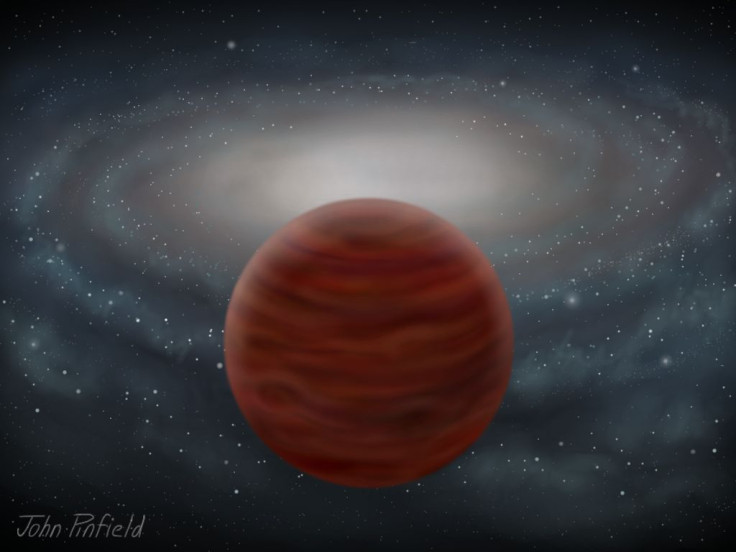This Brown Dwarf Is The Biggest Star-Planet Hybrid Scientists Have Ever Found

It’s not quite a star, yet not a planet either. But it’s the largest of its kind scientists have ever found.
Researchers have described a brown dwarf that they are calling the heaviest and “purest” known to Earthlings, and they found it on the outskirts of our galaxy, in the Pisces constellation 750 light years away. An article in the Monthly Notices of the Royal Astronomical Society says the object is more than 99.99 percent hydrogen and helium. That may make it even more impressive that it is the most massive brown dwarf astronomers have ever noted, considering that hydrogen and helium are the two lightest elements on the periodic table.
The Royal Astronomical Society explains that its gas composition makes it about “250 times purer than the Sun” and shows researchers for the first time that it is possible to form a brown dwarf just from these pure gases.
Brown dwarfs are an “intermediate between a planet and a star,” Encyclopedia Britannica says. They aren’t heavy enough to create energy — and shine light on the universe — through the nuclear fusion of hydrogen in the way stars can, but their size dwarfs planets even as big as Jupiter, which is the largest planet in our solar system. In the case of this new brown dwarf, dubbed SDSS J0104+1535, it is 90 times more massive than Jupiter.
Read: Space Debris is Choking Earth’s Orbit
To put that in perspective of Earth, Universe Today notes that it would take 318 Earths to equal the mass of Jupiter. That latter planet is “2.5 times more massive than all of the other planets in our Solar System combined.”
Calling it brown is a bit of a misnomer — the encyclopedia says the dwarfs typically look more “deep red to magenta,” with the exact shade varying based upon their temperature. That, in turn, may vary depending on their age and how big they are, with the youngest and largest being the hottest and thus more on the red end of the color scale, similar to the temperature and color of a full-fledged star with a low mass, also known as a red dwarf. Based on that idea, the new brown dwarf SDSS J0104+1535 would appear more red than brown.
It has made a spot for itself on the outer reaches of the Milky Way, called the “halo,” where the “most ancient stars” reside, according to the Royal Astronomical Society. It is believed to have formed 10 billion years ago, which would make it more than double the age of the Sun and the Earth.
“We really didn’t expect to see brown dwarfs that are this pure,” lead researcher ZengHua Zhang, from the Institute of Astrophysics in the Canary Islands, said in the society’s statement. “Having found one though … I’d be very surprised if there aren’t many more similar objects out there waiting to be found.”
See also:
© Copyright IBTimes 2025. All rights reserved.





















